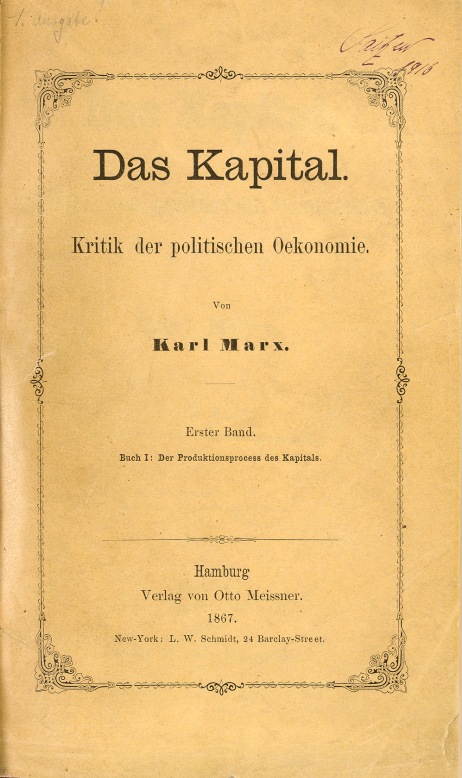Christiane Rehagen, a Masters student from Tübingen, recently spent five months in Oxford for an internship with the university’s libraries and we asked her to give us her impressions of her experience – what did she do with her time here? What differences did she notice between Oxford life and her life at home?
Berufliche Erfahrungen zu sammeln, dabei insbesondere Auslandspraktika, sind heutzutage sehr gefragt. Im Rahmen meines Masterstudiengangs Deutsche Literatur in Tübingen, habe ich die Option, Erweiterungsmodule mit Berufspraktika zu ersetzen, die auch im Ausland stattfinden können. Da ich schon länger gerne nach England wollte, kam die Idee auf, meine Praxiserfahrungen in Oxford bei der Ex-Tübingerin und jetzigen Mediävistikprofessorin Henrike Lähnemann zu sammeln.
Tatsächlich bin ich erst einmal kurz in England gewesen und war deshalb sehr neugierig, wie sich meine Zeit in Oxford wohl gestalten würde. Ursprünglich waren drei Monate angesetzt, aber schon nach zwei Monaten war mir klar: „Das reicht nicht, ich muss unbedingt länger bleiben!“, und habe auf fünf verlängert. Die Arbeit in Oxford hat mir Spaß gemacht; im Gegensatz zu manchen deutschen Praktikastellen wird man hier wenig angemuffelt und erhält stattdessen ein überschwängliches Dankeschön für die geleistete Mithilfe, was mir persönlich sehr viel lieber ist. Auch wenn die einzelnen Aufgaben in der Taylor Institution Library, am Exeter College und an der Faculty of Medieval and Modern Languages für mich spannend und abwechslungsreich waren, möchte ich stattdessen ein paar Eindrücke abseits der Arbeit zusammenfassen, die mir den Aufenthalt so wertvoll gemacht haben.

Eines der ersten Dinge, die mir aufgefallen sind und die ich aus Deutschland so nicht kenne, klingt erstmal etwas seltsam: Die Tiere sind unglaublich zutraulich. Selbst aus Großstädten wie Hamburg ist es mir nicht bekannt, dass Eichhörnchen auf einen zukommen und um Futter betteln – und während ich mich nur ein einziges Mal daran erinnern kann, dass ich in Deutschland einen Fuchs gesehen habe, begegneten mir in Oxford innerhalb kürzester Zeit gleich zwei, wobei keiner von den beiden besonders davon beeindruckt war, dass ich plötzlich vor ihm stand. Ähnliches gilt für die Enten, die man fast schon als latent aggressiv beschreiben könnte. Eigentlich ist das ‚Punten’ bzw. Stocherkahnfahren eine wirklich schöne Freizeitaktivität, die besonders bei schönem Wetter nur jedem empfohlen werden kann, aber vor diesen mit Federn getarnten Haifischen sollte man sich wirklich hüten! Ein besonders freches Exemplar dieser Art hat sich bei unserem Picknick nicht auf die Generosität der Menschen verlassen wollen, sondern sprang tatsächlich vom Wasser aus ins Boot auf meinen Schoß, um mir mein Essen aus der Hand zu klauen. Und das, obwohl sie vorher schon eine Brothälfte aus der Hand einer weiteren Bootinsassin geklaut und davor den halben Finger einer anderen ‚Punterin’ abgebissen hat. So viel zu den Raubtieren in England!

Was sich als nächstes sehr schnell feststellen ließ, ist die Unmöglichkeit, alle Sehenswürdigkeiten selbst in der engsten Umgebung anzusehen. Kaum dass man denkt, man hätte schon ein ordentliches Programm geschafft und seinen Horizont bereits gut erweitert, entdeckt man noch ein College, noch einen Park, noch ein Museum und noch eine Stadt, die man unbedingt angucken muss. Nach vergleichsweise kurzer Zeit konnten schon Iffley, Binsey, Port Meadow, Christ Church Meadow, University Park, South Park (überhaupt alles mit einem Park am Ende und ohne Mauer drumherum), das Ashmolean Museum, Pitt Rivers und University Museum und verschiedene Colleges abgehakt werden. Erst danach hat der Geist die Ruhe, in die weitere Entfernung zu schauen und zum Beispiel nach London zu fahren. Das ist letztlich auch sehr zu empfehlen, da mit dem Bus die Distanz ziemlich einfach zu schaffen ist und die Tickets recht günstig zu erwerben sind.
Gleichzeitig hatte ich sehr viel Glück, was die einmaligen Veranstaltungen angeht, die während meines Aufenthaltes stattgefunden haben. Auf diese Weise konnte ich solche besonderen Ereignisse mitnehmen wie den May Day und Beating the Bounds, bei der die ursprüngliche Grenze des Pfarrgebiets einer (College-)Kirche abgeschritten wird, die Markierungen auf den Grenzsteinen erneuert werden, man dann mit einem Bambusstab daraufschlägt und mehrmals „Mark!“ schreit (einem Kind war die historische Dimension des Ganzen dabei nicht völlig bewusst: „Who’s Mark?“). Das gehört definitiv zu den ungewöhnlichsten Traditionen, die ich je gesehen habe. Ähnlich ging es mir bei solchen Events wie dem Carneval in der Cowley Road, das Farmer’s Festival bei Blenheim Palace, ein Mini-Streetfestival der Nachbarschaft aus der Chester Street etc. Es war ständig was los!

Ebenfalls zu empfehlen sind Wanderungen an den Wegen der Themse entlang, die mit ihren Hausbooten wirklich traumhaft schön sein können. Allerdings sollte man sich darauf einstellen, dass man dort selten allein unterwegs ist, denn Oxford – allen voran die Innenstadt – kann unglaublich überlaufen sein. Unzählige Touristentrupps, die mit ihren Selfiesticks mitten auf der Straße stehen bleiben, sind besonders in den Sommermonaten keine Seltenheit. Auch der Verkehr ist für die kleine Stadt mit ihren teilweise recht engen (oder ‚eng geparkten’) Straßen sehr stark und vor allen Dingen vergleichsweise schnell. Wenn man die Straße überqueren will, sollte man wirklich aufpassen, denn auch wenn Autos an Zebrastreifen eher halten als in Deutschland, wird man dafür beim Abbiegen über den Haufen gefahren.
Christiane Rehagen, Tübingen







